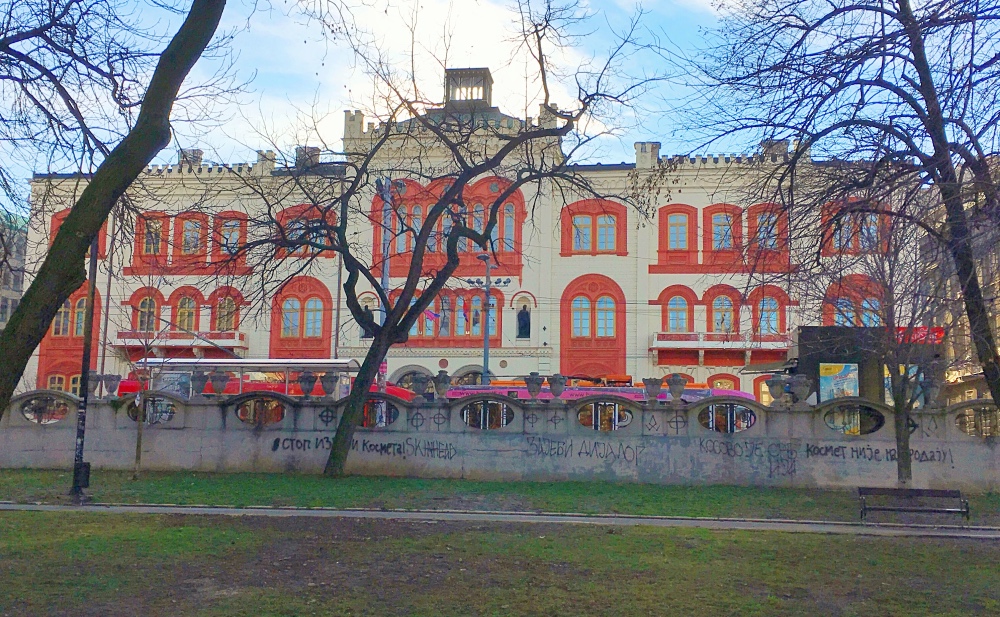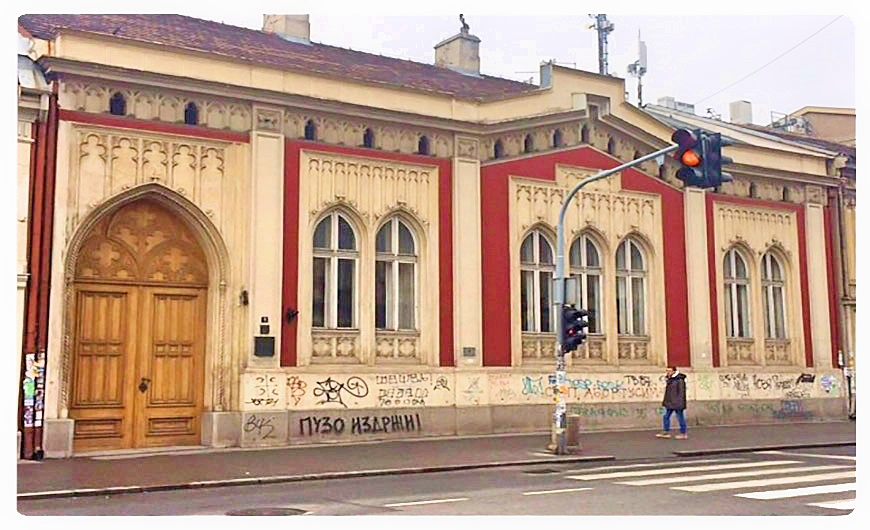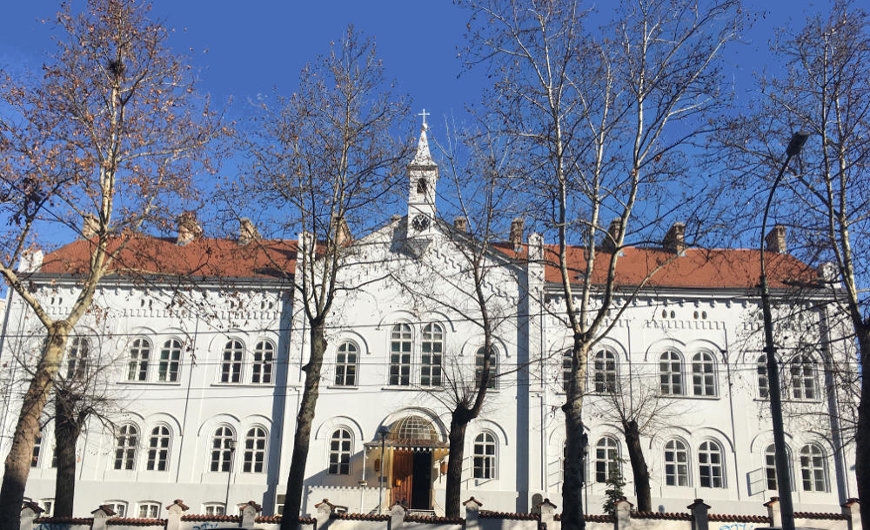Gothic influence in Belgrade architecture was at its peak for a short time mid-19th century, as Serbia was slowly liberating itself from Turkish-Ottoman rule, and the western cultural tendencies started to prevail. The immediate impact was through Germanic cultural influence.
The First Town Hospital (photo above) is one of the oldest buildings in the city, constructed in 1868, and it was intended to be the first proper hospital in Belgrade, hence the name.
Year of construction: 1868
Architecture: in the spirit of Gothic architecture
Location: 19, Džordža Vašingtona (George Washington) street, Stari Grad district
The First Town Hospital was built by the initiative of the Serbian prince Mihailo Obrenović. Now it is the headquarters of the Serbian Medical Society.
The building was constructed at the same time as the National Theater. Considerably smaller than the magnificent edifice of the theater, it costed twice as much. This was due to the fact that its interiors needed to be specially designed for a hospital, and some pretty advanced technology was used for a ventilation system, circulation of running water, and construction of ice generators.
Captain Miša's Edifice

Spirta's House - Zemun Home Museum

This building was constructed by Spirta family, of Greek origin, and as of 1965 it belongs to the Zemun Home Museum (branch of Belgrade City Museum), which shows the history of the district since it was founded back in the Roman days.
Year of construction: 1855
Architecture: Gothic
Location: 9, Glavna street, Zemun district
It's one of the most beautiful buildings in Zemun. The museum and the building are in the process of reconstruction, so it is closed for the public. The main attraction of the house was specially made parquet floor, which was worn out and now it is being reconstructed. It was made from 8 different kinds of wood, richly ornamented, and everything was handmande.
Sprirtas were a wealthy family. However, from all of their wealth, today only one pink crystal glass is left, that was used by the last mistress of the house.
 English (United Kingdom)
English (United Kingdom)  Srpski latinica (Srbija)
Srpski latinica (Srbija) 




















